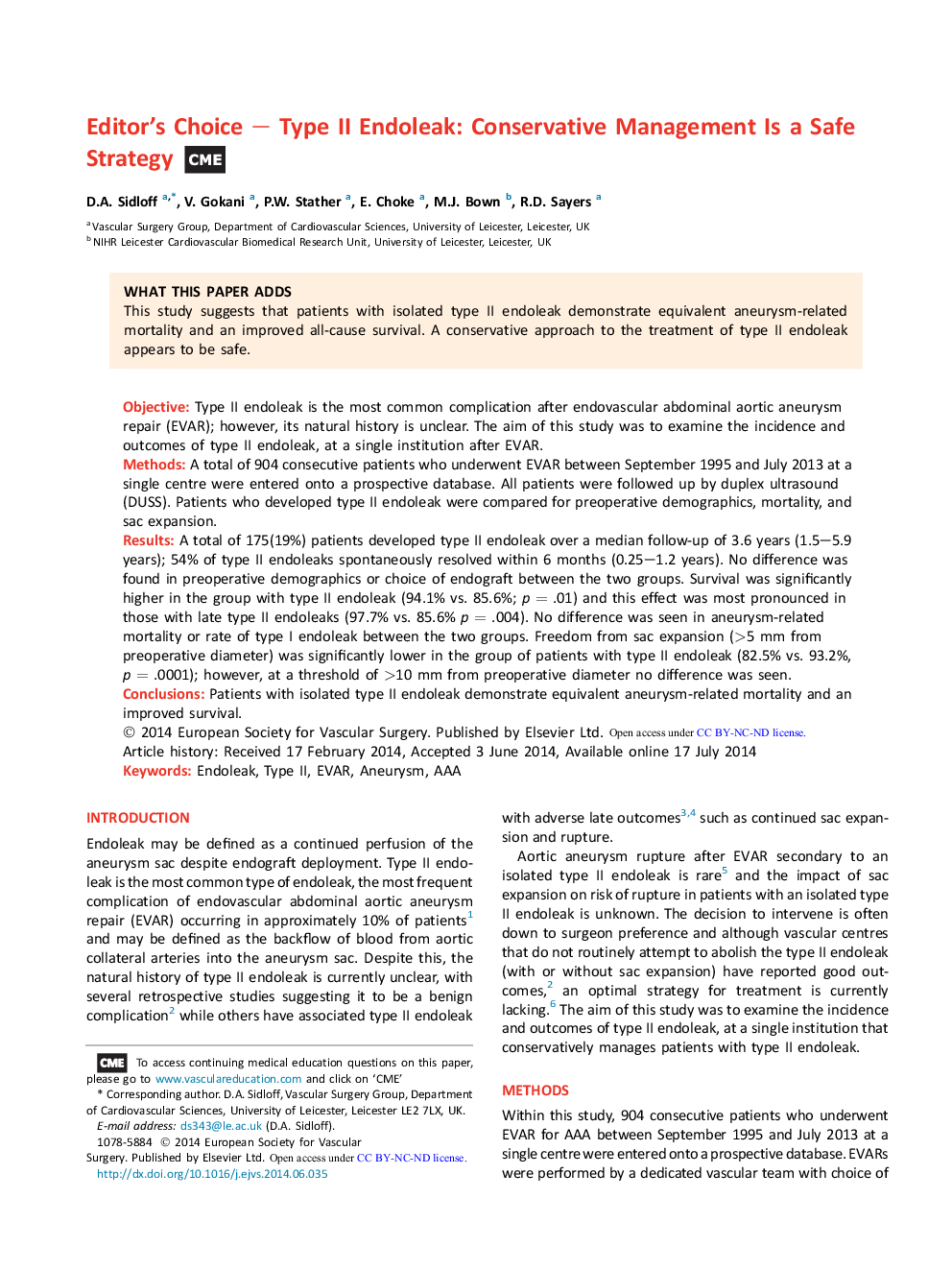| Article ID | Journal | Published Year | Pages | File Type |
|---|---|---|---|---|
| 5958128 | European Journal of Vascular and Endovascular Surgery | 2014 | 9 Pages |
ObjectiveType II endoleak is the most common complication after endovascular abdominal aortic aneurysm repair (EVAR); however, its natural history is unclear. The aim of this study was to examine the incidence and outcomes of type II endoleak, at a single institution after EVAR.MethodsA total of 904 consecutive patients who underwent EVAR between September 1995 and July 2013 at a single centre were entered onto a prospective database. All patients were followed up by duplex ultrasound (DUSS). Patients who developed type II endoleak were compared for preoperative demographics, mortality, and sac expansion.ResultsA total of 175(19%) patients developed type II endoleak over a median follow-up of 3.6 years (1.5-5.9 years); 54% of type II endoleaks spontaneously resolved within 6 months (0.25-1.2 years). No difference was found in preoperative demographics or choice of endograft between the two groups. Survival was significantly higher in the group with type II endoleak (94.1% vs. 85.6%; p = .01) and this effect was most pronounced in those with late type II endoleaks (97.7% vs. 85.6% p = .004). No difference was seen in aneurysm-related mortality or rate of type I endoleak between the two groups. Freedom from sac expansion (>5 mm from preoperative diameter) was significantly lower in the group of patients with type II endoleak (82.5% vs. 93.2%, p = .0001); however, at a threshold of >10 mm from preoperative diameter no difference was seen.ConclusionsPatients with isolated type II endoleak demonstrate equivalent aneurysm-related mortality and an improved survival.
